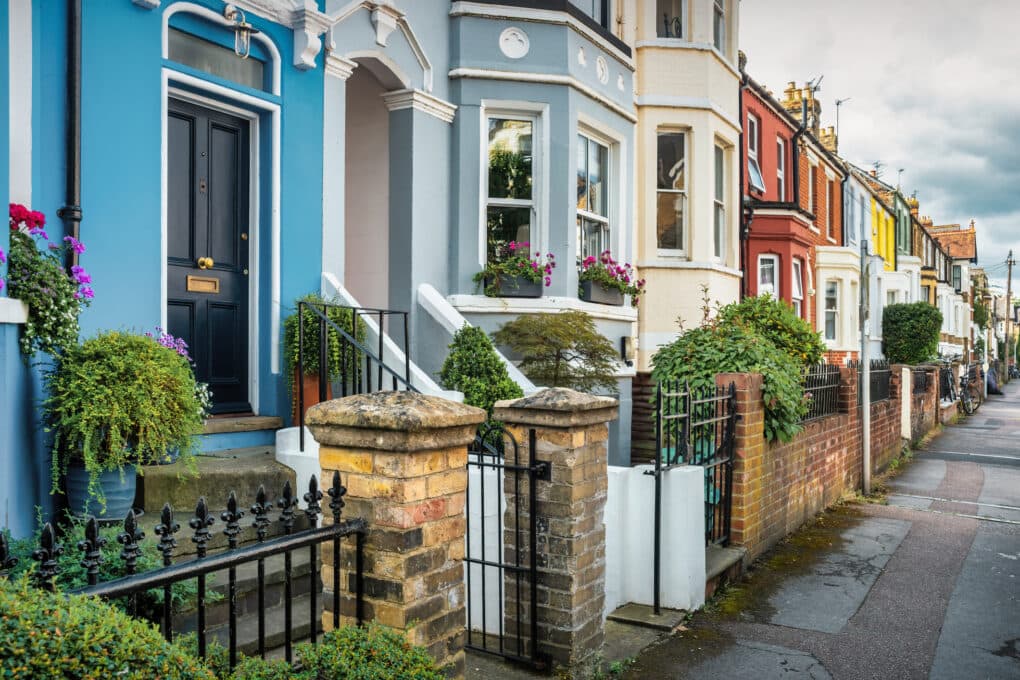Cost of Living Drives a New ‘Escape to the Country’

Cost of Living Drives a New ‘Escape to the Country’
Our love affair with the countryside is well documented. Nobility and royalty visited the bucolic spa locations of Leamington, Tunbridge Wells, Bath and Buxton as far back as the 17th century, to both bathe in and sip the curative waters while enjoying the lush surroundings.
Later, our rolling hills and farmland provided a haven for evacuees during World War I and World War II, with city residents – mainly children and women – relocating to the countryside.
We do like to be beside the seaside
More recently, we reverted back to Victorian past times. The 18th century was prolific for people flocking to the coast to breathe in the clean sea air and indulge in cold water plunges, which doctors believed shocked patients into better health.
Fast forward to the pandemic and, once again, people fled to the seaside in search of space, distance and wellbeing. In fact, Rightmove reported that Cornwall overtook London as the most searched for area for the first-time ever in March 2021.
The great escape
Others decamped from cities to the countryside in a selling frenzy that temporarily gripped the nation. In fact, Centre for Cities’ data found London’s population fell 75,000 during Covid – something they noted as ‘abnormal outmigration’. There was also an exodus of 4,150 people from Nottingham and 3,300 from Birmingham, with movers opting for non-urban locations including South Oxfordshire, Winchester and Wiltshire.
London calling?
Earlier this year there were more than a few column inches devoted to a reversal of moving trends. Rightmove reported a shift in property habits with London, once again, becoming the most searched for area by home movers. In tandem, purchasers for coastal homes were becoming harder to come by.
Rural remains a key search term
Interestingly, the headlines didn’t tell the entire picture. Some of the additional findings alluded to a sub trend. When analysing the keywords buyers have been using when searching Rightmove, the word ‘rural’ moved up a place in the rankings between March 2020 and March 2025. ‘Garden’ also appeared in the top five most used search terms this year, having not made the cut in 2020.
The cost factor
The lesser told story is of singletons, young couples, families and even downsizers finding the cost of living in major cities untenable, forcing them to relocate to cheaper areas. For example, rents in London keep rising from an astronomical starting point. An increase of 0.2% in July, as documented by HomeLet, means a new tenancy in the capital now costs a monthly average of £2,083. For comparison, the UK average is £1,313 per month and just £701 in the North East.
The story is the same for house prices. Zoopla’s June house price index revealed some UK cities were seeing annual value increases well above the national average of 1.3%. Those hoping to buy in Liverpool, Sheffield, Newcastle, Manchester, Glasgow, Birmingham, Leeds and Edinburgh will be paying at least 1.4% more for a home now, when compared to a year ago, with price inflation as high as 6.6% in Belfast.
Rising housing costs are against a backdrop of increasing inflation, with a surprise jump to 3.6% in June. This is well above the Bank of England’s 2% target. Inflation, however, hits differently in different regions.
Take perhaps our most trusted barometer of affordability – the cost of a pint of beer. According to research published by The Drinks Business, pub owners in London charge an average of £6.10 a pint. This compares to the Midlands, who serve the cheapest average pint in the UK at just £4.68.
For those looking to buy a home or remortgage to afford a bigger property, there’s also mortgage rates to consider. These are double what they were in 2021 – now in the region of 4% compared to 2% for those with the best deposits.
Pressure on the social sector
A cost of living hardship isn’t just confined to homeowners and those renting privately. While the Minimum Income Standard London Programme found more than 50% of private renters’ incomes fell short of meeting living costs, this was also true for 41% of social renters in London. This group live in households with incomes below the minimum required for a dignified standard of living, with no guaranteed access to social housing.
Depressingly, the same research found a single working-age adult in Inner London needs 70% more than those living in other UK urban areas, and needs to earn £47,300 annually (vs. £28,000 outside London), to reach the Minimum Income Standard. The high cost of childcare, rising transport expenses and a chronic lack of affordable housing have been cited as reasons behind the financial inequality.
An overwhelming desire to decamp
City dwellers, however, constantly need validation that a move away from the metropolis isn’t a madcap idea. Perhaps, therefore, it comes as no surprise that one of Country Life’s most-read online articles, dating from February 2025, is How to Leave London & Why.
Indeed, anecdotal evidence suggests the phrase Down from London – or the DFLers – was coined to describe ex-London residents who colonised the South Coast. Brighton, Hove and Worthing – with the South Downs National Landscape as its verdant backdrop – have long been relocation hotpots thanks to their close links to the capital.
The focus has since shifted eastwards to Kent. Margate has affectionately been renamed as ‘Shoreditch by the Sea’, with Deal, Whitstable, St Leonards and Folkestone offering improved value-for-money, the Kent Downs on the doorstep and a similar cachet to East London.
Of course, we can’t mention shunning cities for the countryside and not mention the Cotswolds. This collection of market towns and villages comprises rolling hills, mellow ironstone cottages and a liberal sprinkling of A list stars. These include the Beckhams, Kate Moss and Ellen DeGeneres, who have made this area of outstanding natural beauty their home.
A new seat in the countryside
Even with such a picturesque location, the search for the perfect rural idyll continues. Earlier in 2025, The Telegraph noted that Leamington Spa, Bruton in Somerset, Northampton, and the Norfolk trio of Wells-next-the-Sea, Burnham Market and Cromer were garnering attention from famous faces and urban hotshots looking for an alternative countryside setting.
It’s only fitting that, on the day of writing this blog, Zoopla released its list of the best places to buy a cottage in Britain. Riding off the back of the ‘cottagecore’ trend – which sees people embrace a slower pace of life, indulge in countryside pursuits and pursue home-based activities like jam making and flower arranging – movers are encouraged to find the cheapest cottages in North Lanarkshire, Sunderland and Southampton.
A Viewber in every corner of the country
If our relocation habits tell us anything, it’s those involved in property need to have UK-wide representation. At Viewber, our network operates on a nationwide basis, ensuring we can visit any property in any region, county, city, town and village on your behalf.
We support estate and letting agents, auctioneers, landlords, holiday home operators and social housing managers who are moving residents and relocating clients. Our services include accompanied viewings, property inspections, key holding services, EPC creation, fire safety checks and pro-quality photography. Contact us to discover more.




